Certain wine glasses perform better than others (there’s actually some science to back this up). So, what are the best wine glasses for you?
You can drink wine from whatever vessel you want, be it a wine glass, coffee mug, mason jar, or Dixie cup. You can ditch the glass altogether and drink straight from the bottle for all I care.
However, using the right glass can greatly improve the taste of wine. And the good news is, they won’t cost you a fortune either. (Unless of course, you’re obsessed…)
The Importance of a Proper Glass
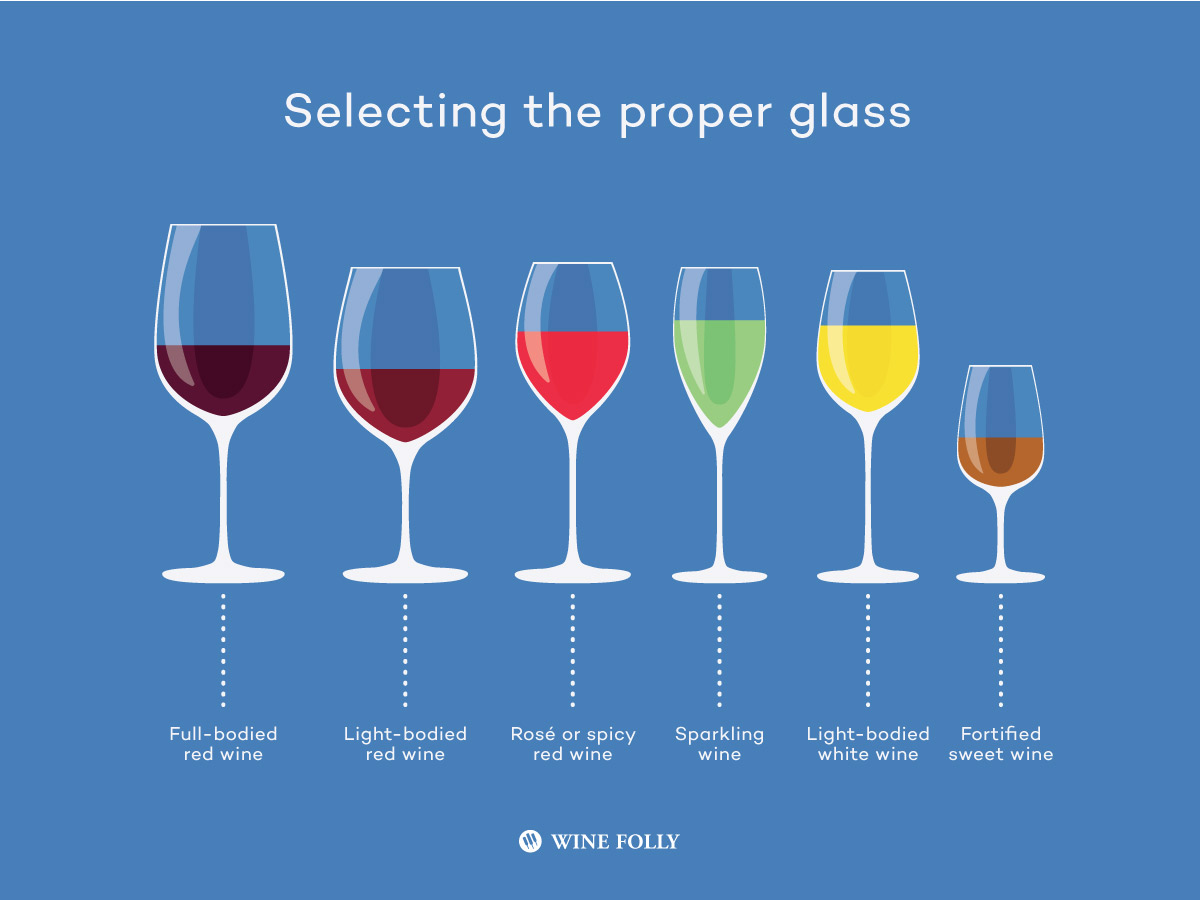
There is scientific evidence that supports the importance of glass shape.
In 2015, a Japanese medical group used a special camera to record images of ethanol vapors in different glasses. In their study, the research group showed how different glass shapes affected the density and position of vapors at the openings of various glasses.
Why do vapors matter? Well, they carry aromatic compounds into your nose. Aromatic compounds are responsible for producing the vast majority of flavors in wine.
WATCH VIDEO: We tested 5 of the world’s best wine glasses.
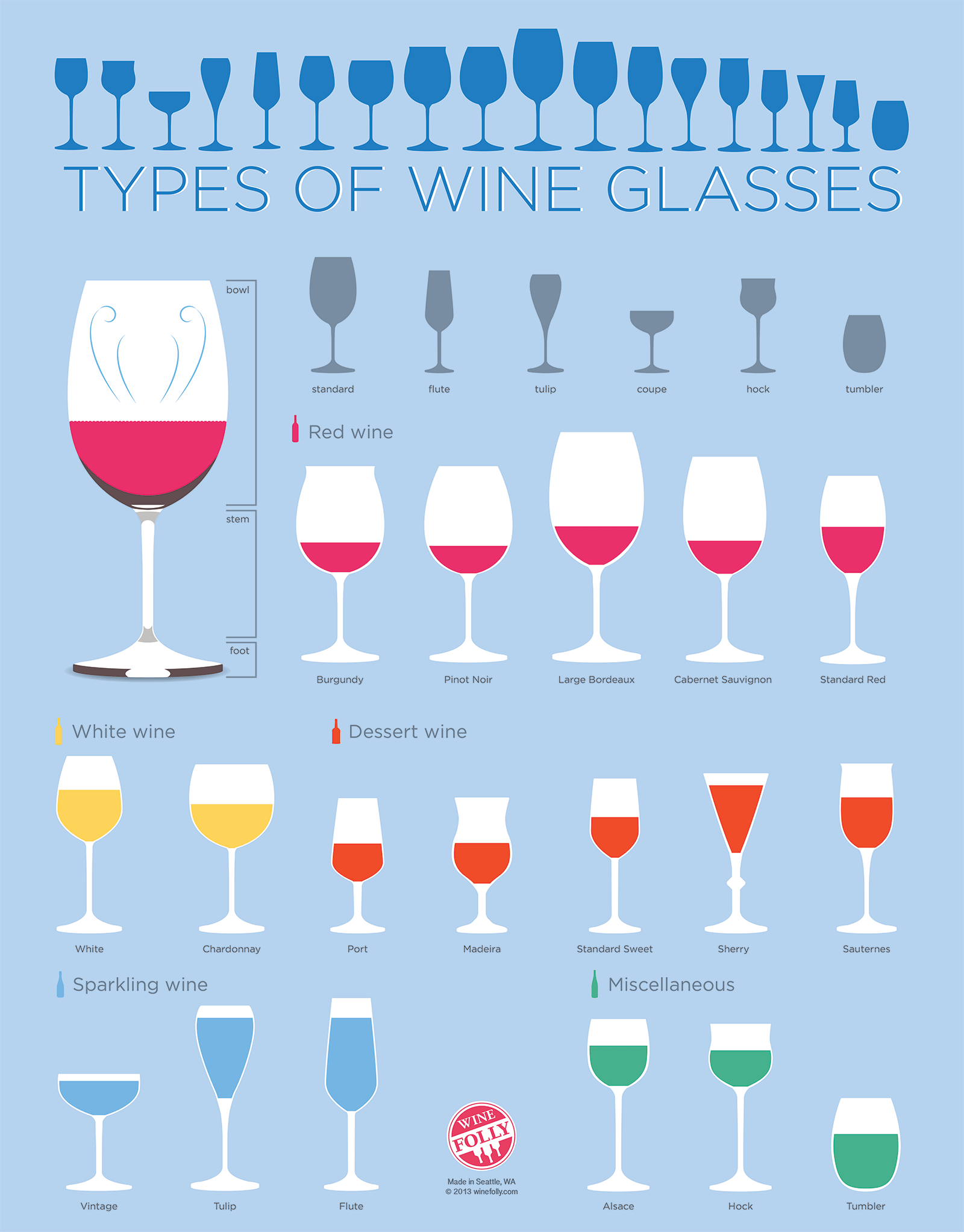
Why Are There So Many Glasses For Wine?
Of the many different wine glasses available, you’ll find that certain shapes are better for enjoying certain types of wine.
By the way, it doesn’t really matter if your glass is stemmed or stemless. It’s more about how the shape of the vessel collects aromas and deposits wine into your mouth. (I know some of you enthusiasts will strongly disagree! 😉 )
Below is a summary of the primary glass shapes and the wines that tend to perform well in these shapes.

First things first: You know those stemmed glasses that you fill all the way to the top? Those aren’t wine glasses. They’re hipster cups.
To taste flavors in wine, you need space above the wine to collect aromas.
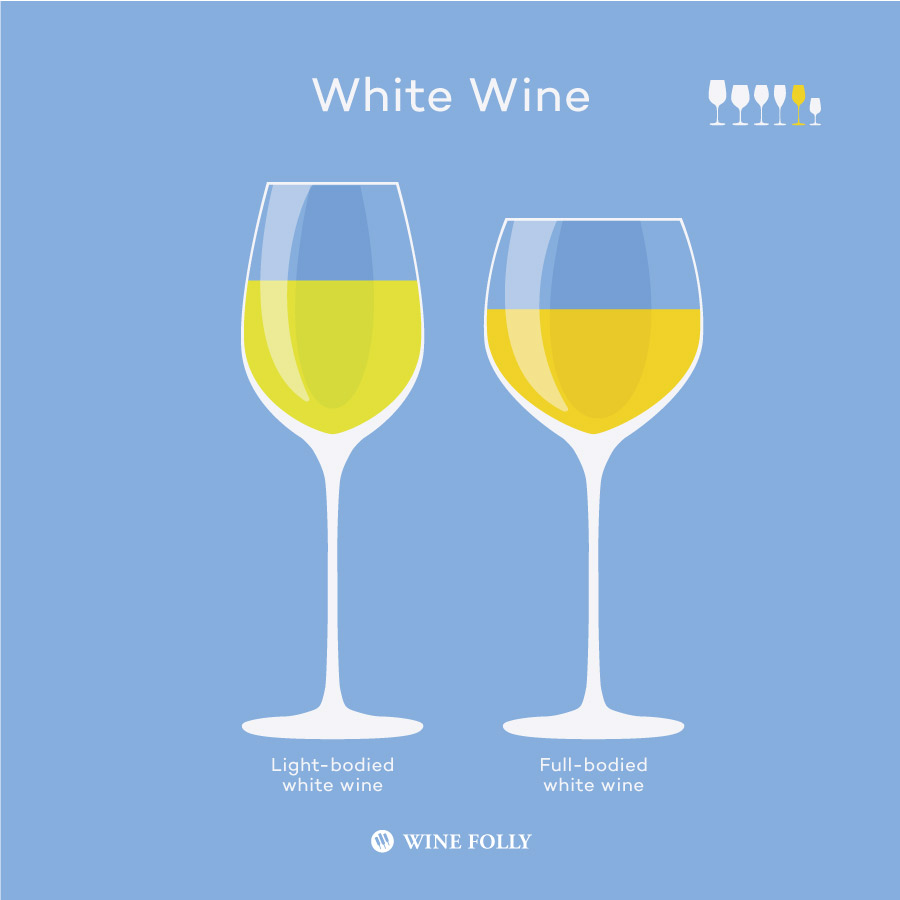
White Wine Glasses
White wines are typically served in smaller bowled glasses. Smaller glasses:
- Preserve floral aromas
- Maintain cooler temperature
- Express more acidity in wine
- Delivers more aromas (even at cooler temperatures) due to proximity to the nose
You’ll notice that full-bodied white wines like oak-aged Chardonnay, Viognier, White Rioja, and orange wines are better with a larger bowl.
The larger bowl, initially introduced by Riedel as a “Montrachet” glass, better emphasizes a creamy texture because of the wider mouth.
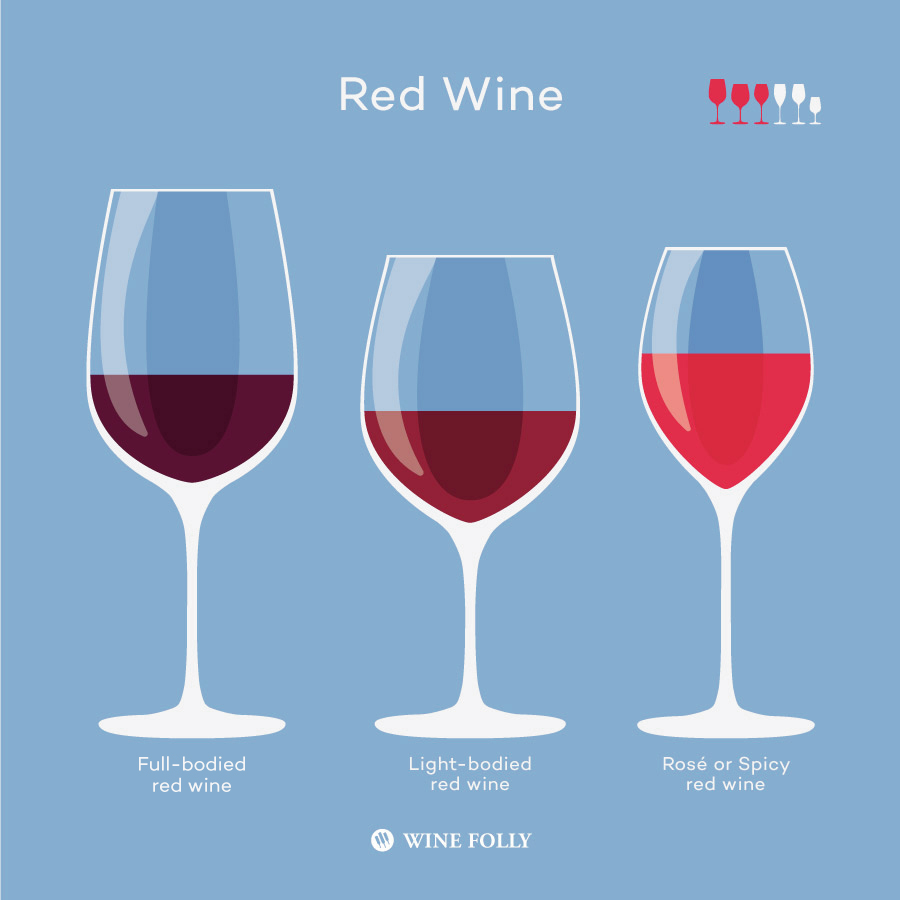
Red Wine Glasses
The choice of a red wine glass has a lot to do with mitigating the bitterness of tannin or spicy flavors to deliver a smoother-tasting wine.
After a few years of tasting wines from different glasses, we’ve noticed that red wines tend to taste smoother from a glass with a wide opening. Of course, the distance to the actual fluid affects what you smell.
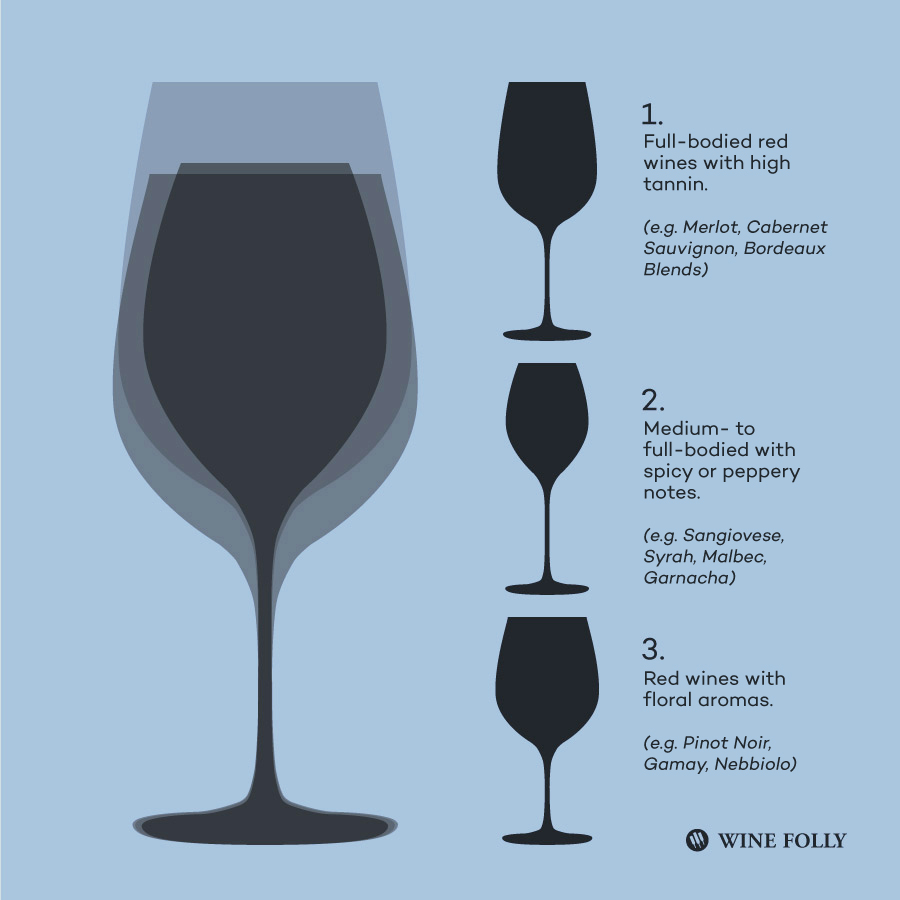
Large “Bordeaux” Glass
This glass shape is best with bolder red wines, such as Cabernet Sauvignon, Cabernet Franc, Alicante Bouschet or Bordeaux Blends.
- Delivers more aroma compounds vs. the burn of ethanol from being farther from the nose
- Larger surface area to let ethanol evaporate
- Wider opening makes wines taste smoother
“Standard” Red Wine Glass
A great glass for medium- to full-bodied red wines with spicy notes and/or high alcohol.
Spice is softened because flavors progressively hit your tongue from the smaller opening. Try wines like Zinfandel, Malbec, Syrah (Shiraz), and Petite Sirah with this glass.
Aroma Collector “Bourgogne” Glass
A great choice for lighter, more delicate red wines with subtle aromas. The large round bowl helps collect all the aromas. Try this glass shape with Pinot Noir, Gamay, Zweigelt, St. Laurent, Schiava, Freisa, Valpolicella blends, and even Nebbiolo!
Specialty Wine Glasses
Depending on what you drink the most, you may find a reason to pick up a few specialty wine glasses.
For example, we cannot live without our official Port glass (shown above on the right). It’s small size and narrow mouth reduces evaporation (it’s a high alcohol wine).
That said, I’ve broken almost every Champagne flute I’ve purchased (flailing arm syndrome).

What About “Universal” Glasses?
A few glass manufacturers, including Zalto and Gabriel-Glas, offer a “universal glass.”
This is a great idea for the space-saving, pragmatic enthusiast who doesn’t want to bother with all the different shapes. Both aforementioned glass brands are of exceptional quality (starting at $30 a stem!), so it’s hard to fuss over the subtle differences in taste delivery.
That said, if you’re someone who “only drinks bold reds” you might be better served with a biggy-sized Bordeaux glass (like the one displayed above).
Questionnaire: Which Wine Glasses Should I Buy?
Answer these questions truthfully to figure out what kind of stemware to buy.
- Do you hand wash special kitchen tools such as knives?
- Do you have places to store tall wine glasses?
- Do you enjoy a glass of wine almost every night?
- Do you wash your dishes after dinner?
- Do you find pleasure in cleaning and organizing your kitchen or bathroom?
- Do you have safe areas that are off-limits to kids?
If you answered mostly “No” Owning fine crystal stemware will drive you insane. Instead, get glassware or stemless crystal glasses. These will be easier to maintain and won’t give you a conniption if they break. You can also wash them in the dishwasher.
If you answered mostly “Yes” You are neurotic enough to keep crystal glassware clean and sparkly. (Yes!) You should look into getting a set of 6 matching crystal wine glasses that you can use for years to come.
